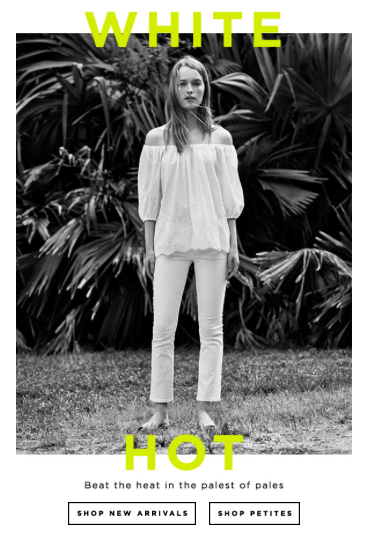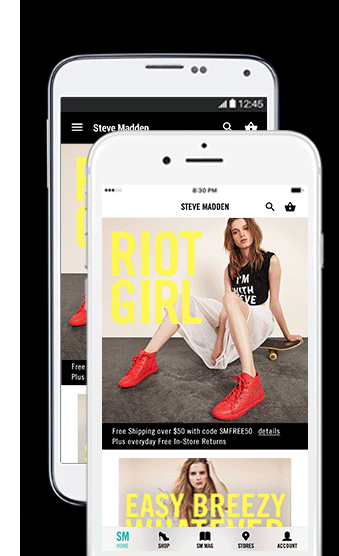That old adage that a picture is worth a thousand words? It’s 100% true when it comes to marketing. Blog posts with images see sky-high engagement – up to 650% higher than those without. Visual content gets shared three times more than non-visual content across social channels.
As for email marketing, it’s no surprise that more and more people prefer emails with visuals. But these days, we have so many choices: static images, animated GIFs and videos. How can you be sure you’re using the right one?Here’s a breakdown of the pros and cons of each, plus how you can use them in your next email marketing campaign.
Static image
What it is: A static image is any non-moving visual image. Think photographs, product shots or your brand’s logo.
How you can use it: Static images are ideal for showing off a single product or idea. For example, an online boutique could use a simple photo to show the detail in a new handbag. A travel website could show a tropical destination to promote a limited-time flight deal. An outdoor retailer could show an image of one of their tents in a forest to display a typical use case.
Ann Taylor Loft uses static images in their seasonal emails.

Pros: Out of the three visual mediums in this post, static images have the best shot at being seen by your subscribers.
Static images are fairly easy to produce.
Photo editing is usually not time-consuming.
Cons: There’s always a chance that some of your subscribers’ email providers may not display images, or your subscribers have turned images off. Learn more about image blocking in emails here.
If you’re promoting something other than a physical product (like a service, digital product or an app), an image might be not cut it.
Bottom line:
If you’re just getting started with adding visual content to your emails or if you sell physical products, test out a static image in your next email campaign.
GIF
What it is: An animated GIF is an image encoded in graphics interchange format, or more simply put, a moving image.
How you can use it: Have an app or an online product? GIFs are perfect for showing off a sleek new update or showing your subscribers how to use your online product. If you promote physical products, a GIF can provide a simple and delightful glimpse at how it’s used.Here’s how Steve Madden used a GIF to promote their new app:

Pros: Emails with GIFs see increased click-through rates and soaring conversion rates.
Lots of email clients display GIFs.
There are many tools available to help you create animated GIFs.
Cons: If you’ve not a designer, there is a learning curve when it comes to creating your own GIFs.
Animated GIFs often pack hefty file sizes. Be mindful of the number of frames you use, and use Photoshop to decrease files sizes if need be.
If you’re trying to communicate a complex product or idea, GIFs may not be for you. (But if you do have a more complex idea, consider linking you GIF out to a full video!)
Bottom line: Animated GIFs are incredibly impactful and eye-catching. They’re the ideal alternative to a video, but they’re not always easy to create on your own.
Video
What it is: This one is self-explanatory, but it’s worth noting that YouTube is now the second largest search engine. Let that sink in.
How you can use it: With video, you have both visual and audio to work with, so you can dig into more details about your products or services. Use video when you need to deliver a clear, benefits-focused explanation.
Wistia includes a play button on their screenshots that link to their videos and webinars, enticing people to click.

Pros: Emails with video can get a 200-300% increase in click-through rates.
You have more time and flexibility to illustrate your points.
No resources? No problem. Test out your ideas with the video function in your phone.
Cons: If you want stellar production quality, you may need to outsource your video.
Most email clients won’t play an embedded video in an email, so you’ll need to link out to your video. To encourage clicks, include a screenshot from your video that links to the video itself (like Wistia does above).
Video editing can take time if you’re inexperienced.
Bottom line: Video can do big things for your email marketing engagement, but high-quality videos can take more time to produce.
Which type of visual content will you use in your emails?
Pick the type of visual content that best aligns with your email marketing goals and test it out in your next campaign. Keep an eye on your analytics and listen to your subscribers’ feedback to find and improve upon all the visual content in your emails.





